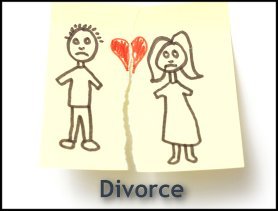
Consequences of Parental Divorce and Marital Unhappiness for Adult Well-Being
Article by Amato and Booth
The Marriage and Divorce of the Children of Divorce
Article by Glenn and Kramer
Review by Richard Niolon
These two articles were published in the journal Family Therapy. They provide a nice review of the main ideas about how divorce “spreads” from one generation to the next by reviewing some of the key research published to date. For example:
- Cox and Cox (1985) found that boys of divorce showed high levels of conduct problems soon after the divorce, and that the parents’ remarriage introduced new behavioral and emotional problems for girls.
- Kulka and Weingarten (1979) found that men from divorced families reported more anxiety and distress in their adult life.
- Booth and Edwards found that parental divorce is associated with marital disagreements, problems, and divorce in one’s own adult marriage.
Amato and Booth offer three models for why this might be so:
- Socialization Model
Divorce and single parent family life teaches dysfunctional behavior and that leads to long-term problems. Glenn and Kramer offer several ways this could be:- absence of models (lacking one parent, children of divorce lack role modeling)
- inappropriate modeling (seeing a bad marriage doesn’t teach you how to have a good one)
- lower resistance to divorce (divorce is less “unthinkable”)
- lower commitment to marriage (assume it will fail)
Amato and Booth review the literature and found this idea received limited support, in that loss of contact with a parent was seen with lower levels of adult marital stability, and the younger the child at the time of the divorce, the greater the impact. However, time in a single parent family and remarriage made no difference.
Divorce leads to decrements in financial stability and that leads to long-term problems. Glenn and Kramer offer two mitigating factors:
- children of divorce tend to marry at an earlier age (leading to less mature and stable relationships) (see Wallerstein and the CDC study)
- lower education and SES (meaning other issues associated with low SES come into play and interfere with job opportunities, housing quality, and neighborhood/community support)
Amato and Booth offer that this has received limited support solely as a financial variable. However, research has shown that children living in their father’s custody were financially better off than those living in their mother’s custody. This is often because fathers maintain the same or a similar financial picture, while mothers, earning less as women and often neglecting their careers to care for their children make less money. Thus, financial loss, as it relates to family stress, is more likely important than simple decrease in the mother’s monthly income.
Divorce distresses children, and that leads to long-term problems. This received the most support, as children of divorced families and intact and unhappy families showed similar levels of dysfunction, and multiple divorces was seen with more distress. Glenn and Kramer offer two additional considerations in explaining this idea:
- inadequate social control (poor parenting after the divorce is the main vehicle for the negative effects of divorce)
- genetics/dysfunctional family processes (divorce is not what’s passed on; rather, personality characteristics that make divorce more likely are passed on, like irritability, impulsivity, poor coping with stress…. This is some of what’s discussed in Judith Rich-Harris’ book The Nature Assumption)
Amato and Booth basically found:
- Adults from families who divorced are less satisfied in their lives compared to adults from intact and happy families. However, they are happier than adults from families that were miserable but stayed together. Thus, this is consistent with Wallerstein’s contention that if you and your spouse really can’t stand each other, and “staying together for the children” means raising them in a miserable and unhappy home, divorce might be a better idea.
- When these adults do have emotional or mental health problems, they are just as serious as those shown in adults from miserable but intact families. Thus, there is no way to “erase” the impact of divorce.
- The younger the adult was when the parents divorced, the greater the distress and unhappiness they showed in their adult life. This may be because the dysfunctional impact of divorce has a longer time to harm the child, or because the child had fewer cognitive resources to handle the impact of the divorce when they were so young.
- Length of time in a single parent home made little difference, and custodial mother’s remarriage made little difference. However, the non-custodial father’s remarriage often improved father contact with the children (Bray and Kelly offer this is because second wives are more likely to prompt their husbands to remain involved with their children).
- The impact of multiple divorces (which would seem to be the norm according to Wallerstein) was worse than the impact of only one divorce. Losing contact with a parent had more negative effects than did maintaining contact, even when the parents continued to argue occasionally.